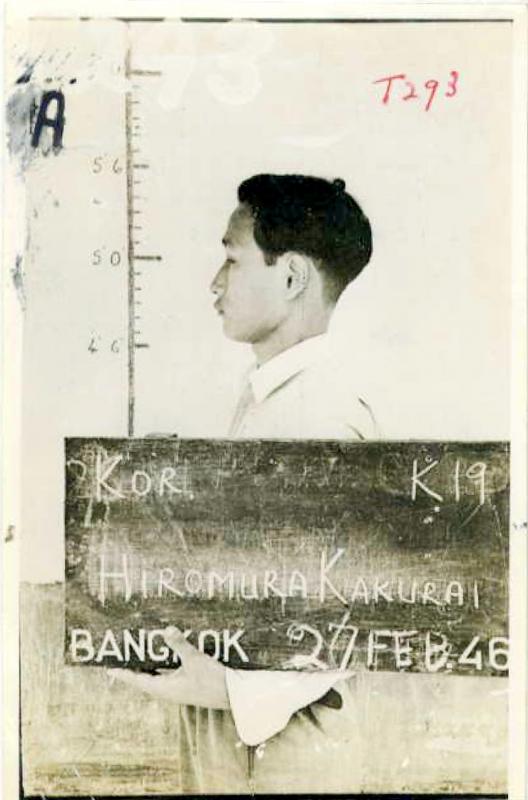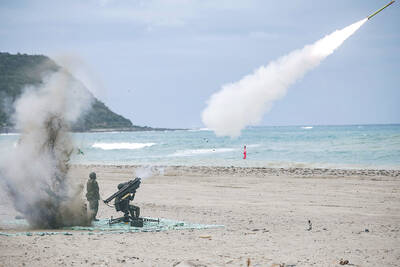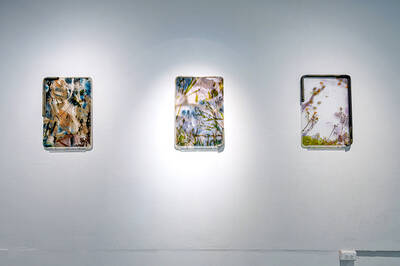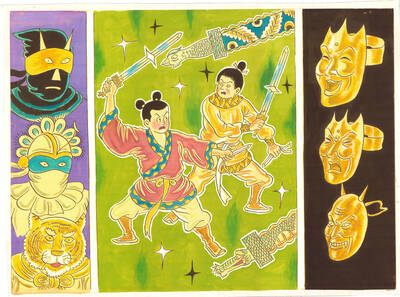To the casual observer, 95-year-old Lee Hak-rae could be just another elderly person in Japan. Surrounded by pictures of his family and paintings by his great-grandchildren, Lee potters about his cluttered living room on the outskirts of Tokyo.
But Lee is obsessed by brutal events of 75 years ago that have defined his life: his recruitment into the Japanese army from then-occupied Korea in 1942; his role in building the Thai-Burma railway; being designated a World War Two criminal; and how, he says, he was tossed into the dustbin of history by both Japan and South Korea.
Since recovering its sovereignty under the San Francisco Peace Treaty signed in 1951, and reviving military pensions in 1953, Japan has given a pension supplement that can add up to about US$41,000 a year to military veterans.

Photo: Reuters
That includes war criminals and their families, government officials say. Japanese wartime leaders convicted of war crimes by an Allied tribunal are honored at Tokyo’s Yasukuni shrine.
The treaty also meant Koreans who fought for Japan lost their Japanese nationality, and with it, entitlement to such assistance. More importantly for Lee, the men have never been afforded the attention and a sense of closure given to their Japanese counterparts.
“Listen to me. Why are they treating us differently?” says Lee, switching in a barely audible voice between Korean and Japanese.

Photo: Reuters
“It’s unfair and doesn’t make any sense. How can I accept this unbelievable situation?” Lee said as he clutched dog-eared clippings documenting his years of campaigning for recognition and compensation.
Lee was among 148 Korean war criminals convicted after the war. Now he is the last survivor.
Twenty-three of them were executed and he too was sentenced to death by hanging as Kakurai Hiromura in 1947.
His sentence was commuted on appeal to 20 years. He was released on parole from a Tokyo prison in 1956.
About 240,000 Korean men took part in the war on the Japanese side.
After the war, while Allied governments rounding up suspected war criminals treated men of Korean ethnicity as Japanese, they were rejected by both Korea and Japan, historians say.
“The Koreans convicted of war crimes had a terrible time after the war because they were regarded as collaborators by other Koreans, but they weren’t recognized by the Japanese government as veterans,” said Robert Cribb, history professor at Australian National University.
Cribb said it was unfair the Japan gave pensions to their war criminals but not to Koreans who were part of the Japanese army.
THE LIZARD
In 1943, Lee oversaw about 500 Allied prisoners of war (POW) building what later became known as the Death Railway between Thailand and Myanmar.
About 12,000 POWs died from overwork, beatings and exhaustion during the construction of the 415km line. The conditions were made famous in the 1957 film The Bridge on the River Kwai.
Trial records show prisoners remembered Lee, known as the Lizard, as one of the most brutal guards on the railway.
Austen Fyfe, an Australian POW, said Lee was notorious for his brutality and beat him repeatedly, including with a bamboo stick on the back of the head. Other prisoners said Lee would stalk their makeshift hospital and “beat up the people he thought to be well enough to work.”
Lee told the court he had “pushed them slightly near the shoulder” but denied charges of brutality, records show. Lee said Koreans were on the lowest rung of the Japanese military hierarchy and merely took orders.
After his release, Lee started a taxi company with other Korean war criminals. Afraid of being labeled a traitor back home, he felt he could not return, even missing his mother’s funeral.
“Except my parents and siblings, no one would welcome me,” he said.
In 1999, Japan’s Supreme Court rejected compensation claims by Lee and other Korean war criminals.
In 2006, South Korea recognized them as victims of Japanese imperialism but offered no compensation to those living in Japan. Those in Korea gained the right to subsidized healthcare.
Lee can now only walk with help but he keeps campaigning, even from his wheelchair. In June, he went to parliament to urge lawmakers to propose a law compensating Korean war criminals and their families.
“I was lucky to live until 95. I don’t want to live longer for myself but I can’t stop fighting for my dead comrades,” he said.

In late October of 1873 the government of Japan decided against sending a military expedition to Korea to force that nation to open trade relations. Across the government supporters of the expedition resigned immediately. The spectacle of revolt by disaffected samurai began to loom over Japanese politics. In January of 1874 disaffected samurai attacked a senior minister in Tokyo. A month later, a group of pro-Korea expedition and anti-foreign elements from Saga prefecture in Kyushu revolted, driven in part by high food prices stemming from poor harvests. Their leader, according to Edward Drea’s classic Japan’s Imperial Army, was a samurai

Approaching her mid-30s, Xiong Yidan reckons that most of her friends are on to their second or even third babies. But Xiong has more than a dozen. There is Lucky, the street dog from Bangkok who jumped into a taxi with her and never left. There is Sophie and Ben, sibling geese, who honk from morning to night. Boop and Pan, both goats, are romantically involved. Dumpling the hedgehog enjoys a belly rub from time to time. The list goes on. Xiong nurtures her brood from her 8,000 square meter farm in Chiang Dao, a mountainous district in northern Thailand’s

Located down a sideroad in old Wanhua District (萬華區), Waley Art (水谷藝術) has an established reputation for curating some of the more provocative indie art exhibitions in Taipei. And this month is no exception. Beyond the innocuous facade of a shophouse, the full three stories of the gallery space (including the basement) have been taken over by photographs, installation videos and abstract images courtesy of two creatives who hail from the opposite ends of the earth, Taiwan’s Hsu Yi-ting (許懿婷) and Germany’s Benjamin Janzen. “In 2019, I had an art residency in Europe,” Hsu says. “I met Benjamin in the lobby

April 22 to April 28 The true identity of the mastermind behind the Demon Gang (魔鬼黨) was undoubtedly on the minds of countless schoolchildren in late 1958. In the days leading up to the big reveal, more than 10,000 guesses were sent to Ta Hwa Publishing Co (大華文化社) for a chance to win prizes. The smash success of the comic series Great Battle Against the Demon Gang (大戰魔鬼黨) came as a surprise to author Yeh Hung-chia (葉宏甲), who had long given up on his dream after being jailed for 10 months in 1947 over political cartoons. Protagonist